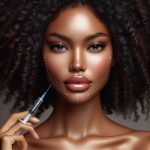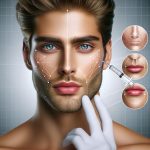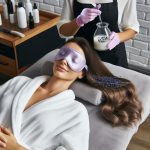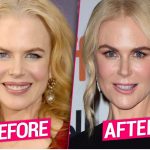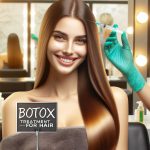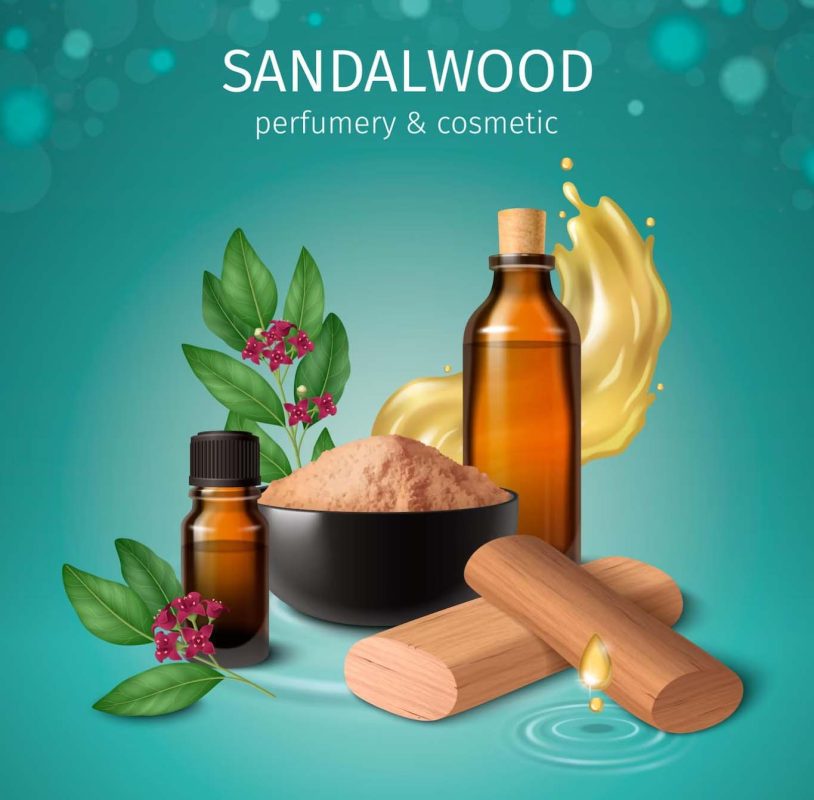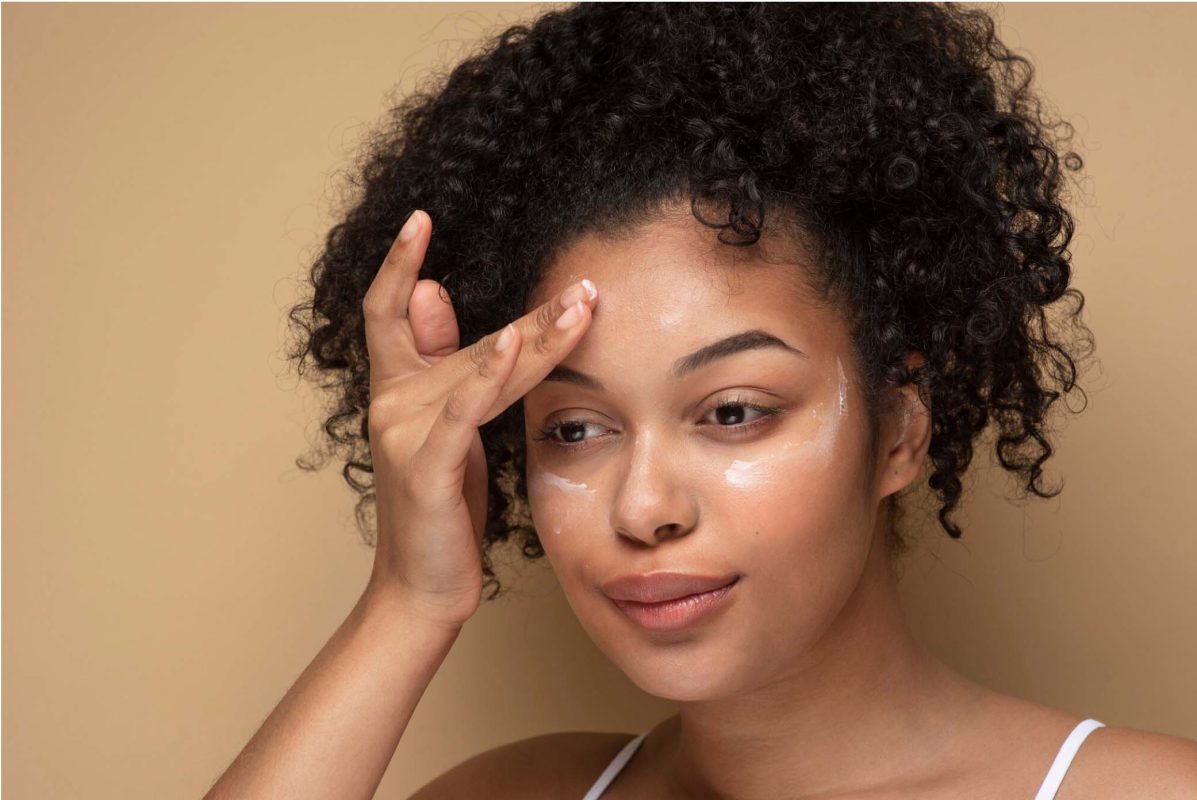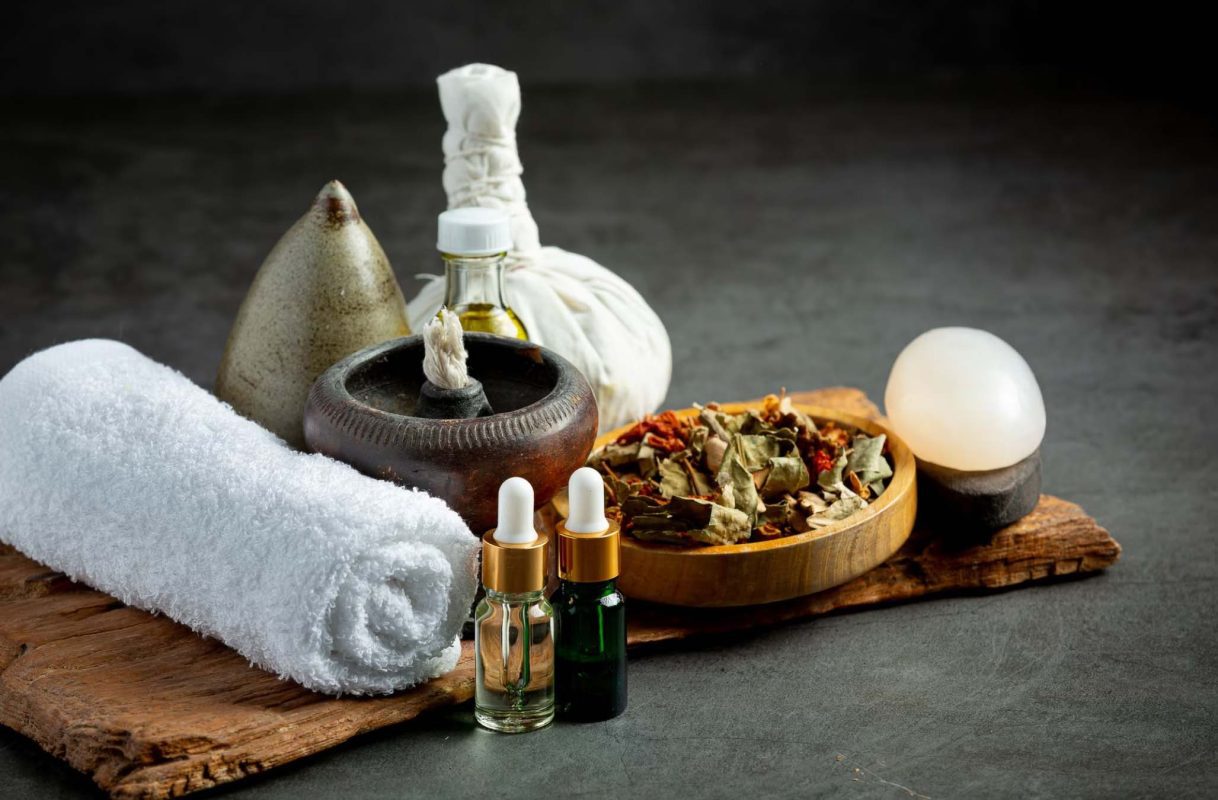Understanding Botox, Injection Treatments & Side Effects
Botox Meaning and Treatments
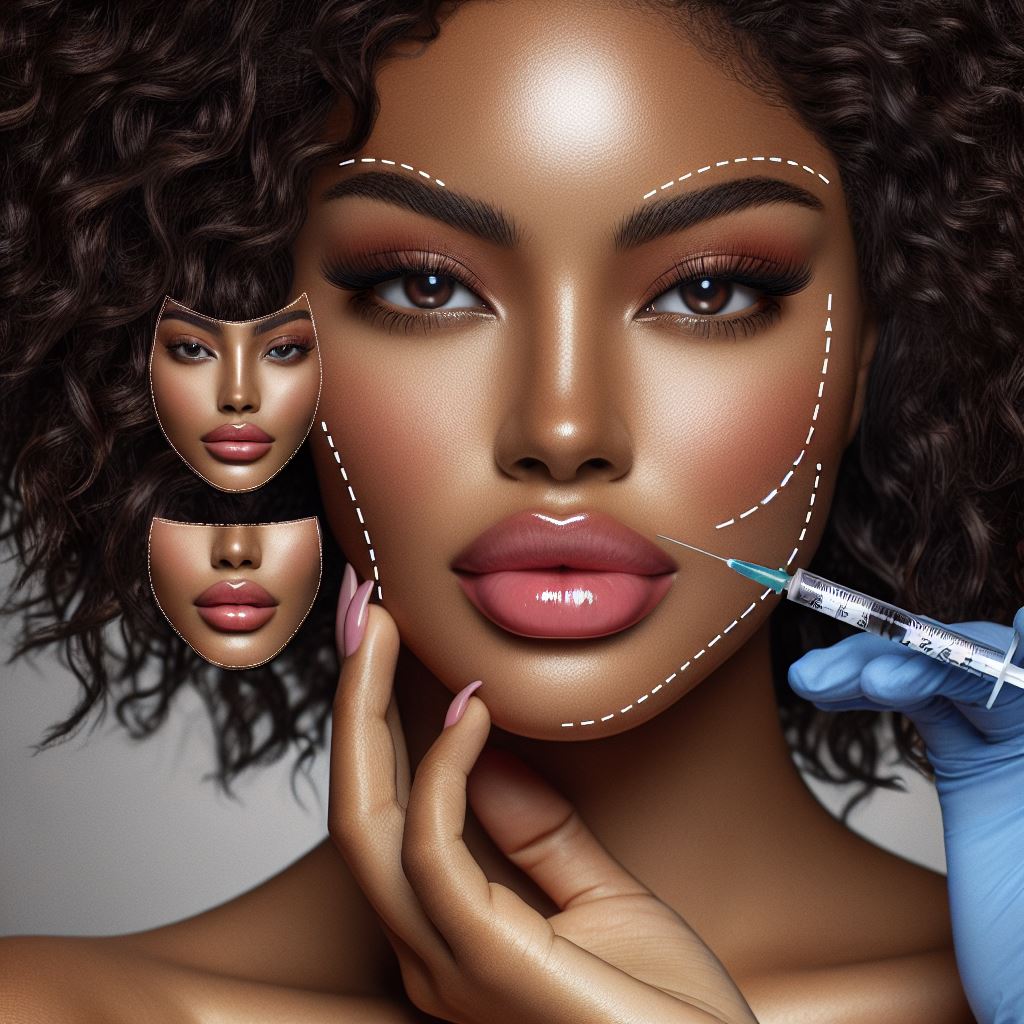
Botox, short for Botulinum Toxin, is a substance derived from the bacterium Clostridium botulinum. This neurotoxin has gained widespread use in both cosmetic and medical fields due to its unique properties. Understanding its meaning and mechanism of action is crucial for those considering Botox treatments.
Botox Definition
Botox is a purified form of the botulinum toxin, a potent substance produced by the bacterium Clostridium botulinum. While the term “toxin” may sound alarming, Botox is utilized in controlled and highly diluted amounts for therapeutic and cosmetic purposes.
Main Uses of Botox
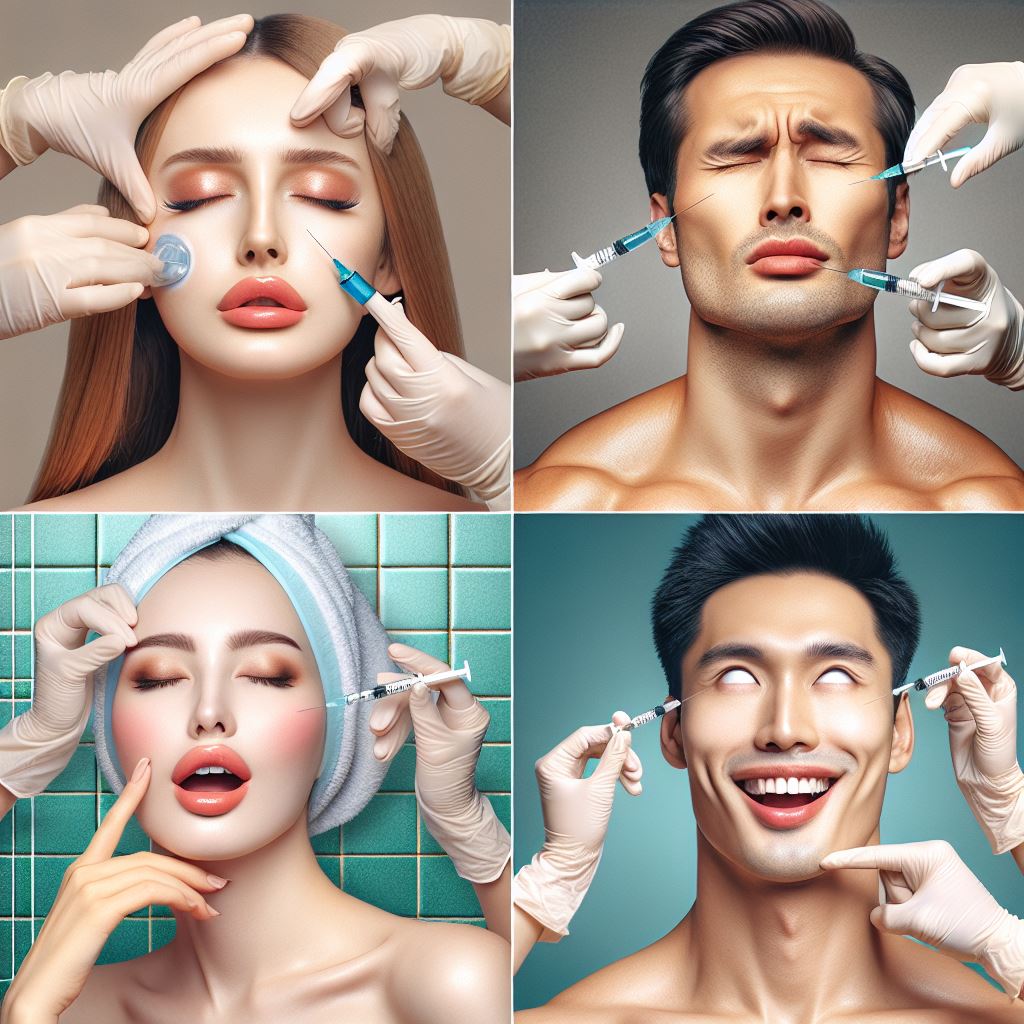
Botox works by temporarily paralyzing muscles, and here’s the simple breakdown of how it does that:
- Neurotransmitter Interference:
- Botox targets a neurotransmitter called acetylcholine, which is like a messenger between nerves and muscles.
- Injection Precision:
- When Botox is injected, it precisely interferes at the meeting point of nerves and muscles, known as the neuromuscular junction.
- Disrupting Acetylcholine Release:
- Botox disrupts the usual release of acetylcholine by preventing its vesicles from reaching the nerve cell membrane, disrupting the typical communication.
- Blocking Nerve Signals:
- By doing this, Botox puts a temporary block on the signals that nerves send to muscles, essentially saying, “Hold off on the contractions.”
- Muscle Relaxation:
- As a result, the targeted muscles experience a temporary state of relaxation because they aren’t getting the usual command to contract.
This precision ensures that only the specific muscles being treated are affected, providing a temporary solution for things like reducing wrinkles or addressing muscle spasms without compromising overall muscle function. It’s like putting a gentle pause button on certain muscle activities!
Types of Injectable Botox: Botox, Dysport, Xeomin, and Jeuveau
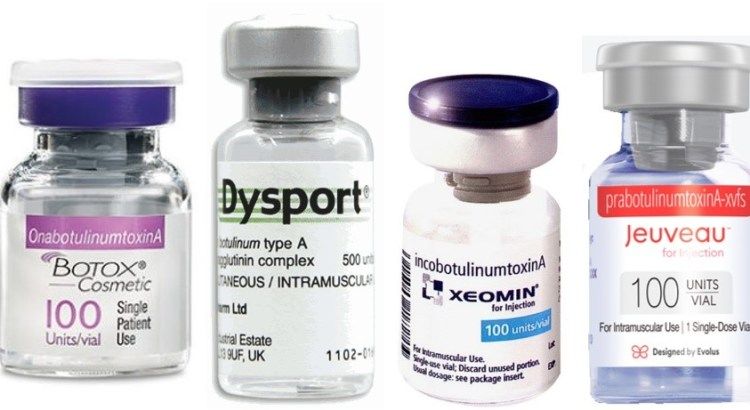
As the demand for non-surgical facial rejuvenation continues to rise, understanding the nuances among injectable Botox products becomes essential. Botox, Dysport, Xeomin, and Jeuveau are prominent names in this arena, each offering distinctive features tailored to individual preferences and needs.
Botox: Pioneering Cosmetic Excellence
Botox, which we have already talked about, or Botulinum Toxin Type A, stands as the pioneer in the world of cosmetic injectables. Focused on reducing muscle activity, it effectively smoothens facial lines and wrinkles, with results lasting approximately 3 to 4 months. This tried-and-true injectable has garnered recognition for its efficacy in treating frown lines, forehead wrinkles, and crow’s feet.
Dysport: A Competitor with Unique Advantages
Dysport, with its primary ingredient AbobotulinumtoxinA, presents itself as a worthy contender to Botox. While sharing similarities in its purpose and duration of results, Dysport is known for potentially requiring fewer injections due to its broader spread. Some users also report a quicker onset of action, contributing to a natural-looking outcome.
Xeomin: A Pure Approach to Wrinkle Reduction
Xeomin, boasting IncobotulinumtoxinA as its main ingredient, takes a unique approach with its “naked” formulation—devoid of complexing proteins. Similar to Botox, it targets muscle activity to diminish wrinkles, offering results lasting 3 to 4 months. This injectable may be particularly suitable for individuals who have developed antibodies to other botulinum toxin products.
Jeuveau: The New Kid on the Block
Jeuveau, featuring PrabotulinumtoxinA-xvfs, emerges as a relative newcomer but quickly gains attention for its similarity to Botox and competitive pricing. With results comparable to its predecessors, Jeuveau offers another viable option for those seeking effective muscle activity reduction and wrinkle minimization.
Choosing the Right Injectable: Key Factors
- Individual Goals: Consider specific concerns and desired outcomes, whether targeting frown lines, crow’s feet, or forehead wrinkles.
- Personal Response: Acknowledge that individual responses to each product can vary, and trying different options may be beneficial.
- Provider Recommendation: Consult with a qualified healthcare provider who can provide personalized recommendations based on your unique facial anatomy.
- Cost Considerations: Factor in your budget, as pricing may vary among products.
The choice between Botox, Dysport, Xeomin, and Jeuveau involves a thoughtful consideration of individual goals, preferences, and professional advice. These options open avenues for effective facial rejuvenation, ensuring individuals can confidently select the injectable that aligns with their unique needs. A consultation with a skilled healthcare provider serves as the compass, guiding the journey towards achieving personalized and desirable facial aesthetics.
Treatment and Pricing: The Costs of Botox Injections
The decision to undergo Botox treatment often comes with questions, particularly regarding the associated costs. Understanding the pricing of Botox injections involves navigating a landscape influenced by various factors, including the treatment area, the proficiency of the healthcare provider, and the geographical location of the clinic.
Factors Influencing Botox Injection Costs:
- Treatment Area: One of the primary determinants of Botox injection costs is the specific treatment area. Different facial regions require varying amounts of Botox, and each area comes with its unique pricing considerations. Common treatment areas include frown lines, forehead wrinkles, and crow’s feet, each necessitating a distinct approach for optimal results.
- Provider’s Expertise: The expertise and reputation of the healthcare provider administering the Botox injections play a crucial role in determining costs. Highly skilled and experienced professionals may charge higher fees for their services, reflecting the assurance of precision, safety, and a successful outcome. Choosing a qualified and reputable provider is paramount to the overall success of the Botox treatment.
- Geographical Location: The cost of Botox injections can vary significantly based on the geographical location of the clinic. Urban centers and areas with a higher cost of living generally tend to have higher Botox prices. It’s essential to consider the regional economic factors when evaluating pricing, as this can impact the overall expense of the procedure.
Consultation: The Key to Accurate Cost Estimation:
Embarking on the journey of Botox treatment starts with a consultation with a qualified healthcare professional. During this crucial initial step, individuals can discuss their aesthetic goals, express concerns, and outline the specific areas they wish to address. The healthcare provider, in turn, evaluates the extent of treatment required, providing a tailored plan that includes a comprehensive breakdown of the associated costs.
Navigating the Pricing Landscape:
Understanding the cost of Botox injections is not merely about finding the lowest price but ensuring value and safety. Bargain prices may sometimes indicate compromises in terms of the quality of the product used or the expertise of the provider. Opting for a reputable and qualified healthcare professional, even if their fees are relatively higher, can contribute to a more satisfactory and successful Botox experience.
Potential Additional Costs:
In addition to the primary costs associated with Botox injections, individuals should be aware of potential additional fees that may arise. These can include consultation fees, facility charges, or post-treatment follow-up costs. Clear communication with the healthcare provider during the initial consultation helps in understanding the full scope of expenses and prevents any unexpected financial surprises.
Insurance Coverage:
It’s important to note that Botox treatments for cosmetic purposes are typically not covered by insurance. However, if Botox is prescribed for specific medical conditions, such as chronic migraines or muscle spasms, insurance coverage may be applicable. Individuals considering Botox for medical reasons should consult with their healthcare provider and insurance company to understand potential coverage.
By prioritizing a consultation with a qualified healthcare professional, individuals can gain insights into the specific costs associated with their unique treatment plan. Investing in a reputable provider and understanding the nuances of pricing ensures not only an accurate estimate but also a safer and more satisfying Botox experience.
Applications of Botox
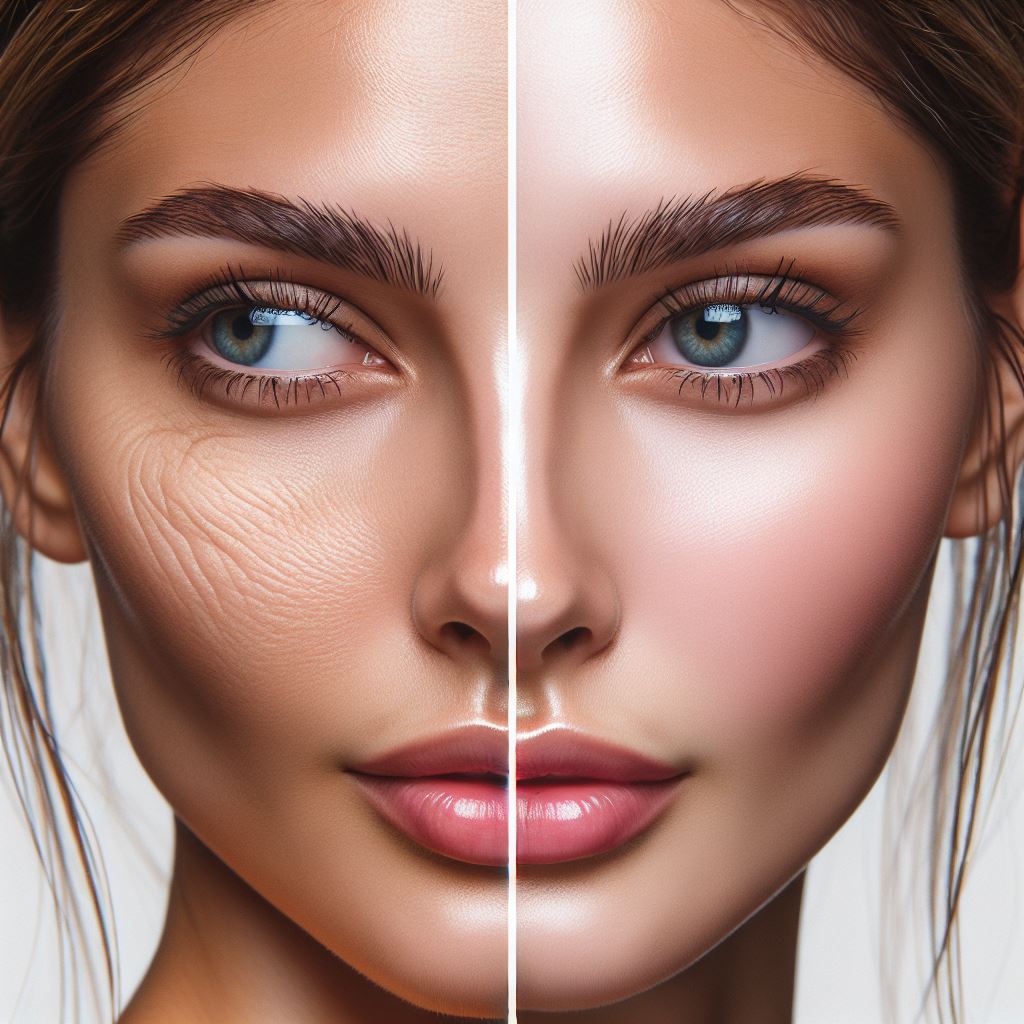
Cosmetic Use
Botox gained initial recognition for its cosmetic applications, particularly in reducing the appearance of facial wrinkles. It is commonly employed to address:
- Frown Lines (Glabella Lines): Lines between the eyebrows.
- Forehead Wrinkles: Horizontal lines on the forehead.
- Crow’s Feet: Wrinkles around the eyes.
Medical Use
Beyond its cosmetic benefits, Botox has proven effective in treating various medical conditions, including:
- Muscle Spasms: Botox injections can alleviate involuntary muscle contractions, providing relief from conditions like cervical dystonia.
- Chronic Migraines: Botox is an FDA-approved treatment for reducing the frequency of chronic migraines.
- Hyperhidrosis: Excessive sweating, especially in the underarms, can be controlled with Botox injections.
- Lazy Eye: Botox helps correct muscle imbalances causing lazy eye (strabismus).
- Overactive Bladder: Botox injections can reduce urinary incontinence associated with an overactive bladder.
Botox in Cosmetic Procedures
Procedure Overview
Botox cosmetic procedures involve the following key steps:
- Consultation: Individuals discuss their aesthetic goals and medical history with a qualified healthcare provider.
- Injection: Botox is injected using a fine needle into targeted muscles.
- Temporary Discomfort: Minimal discomfort is experienced during the procedure, often well-tolerated without anesthesia.
- Results: Effects become noticeable within days to a week, with full results appearing over time.
Longevity of Results
The duration of Botox’s effects varies but typically lasts 3 to 4 months. Some individuals may experience longer-lasting results, while others may find effects wearing off sooner.
Safety Considerations
FDA Approval
Botox has received approval from the U.S. Food and Drug Administration (FDA) for both cosmetic and medical applications. Its safety and efficacy are well-established when administered by licensed and trained healthcare professionals.
Side Effects
While Botox is generally safe, potential side effects may include:
- Temporary Bruising: Occurs at the injection site.
- Headache or Flu-like Symptoms: Mild and transient.
- Drooping Eyelids or Brow: Rare, but possible.
- Muscle Weakness: Can occur if the toxin spreads beyond the intended area.
Preparing for Botox Injection Treatment
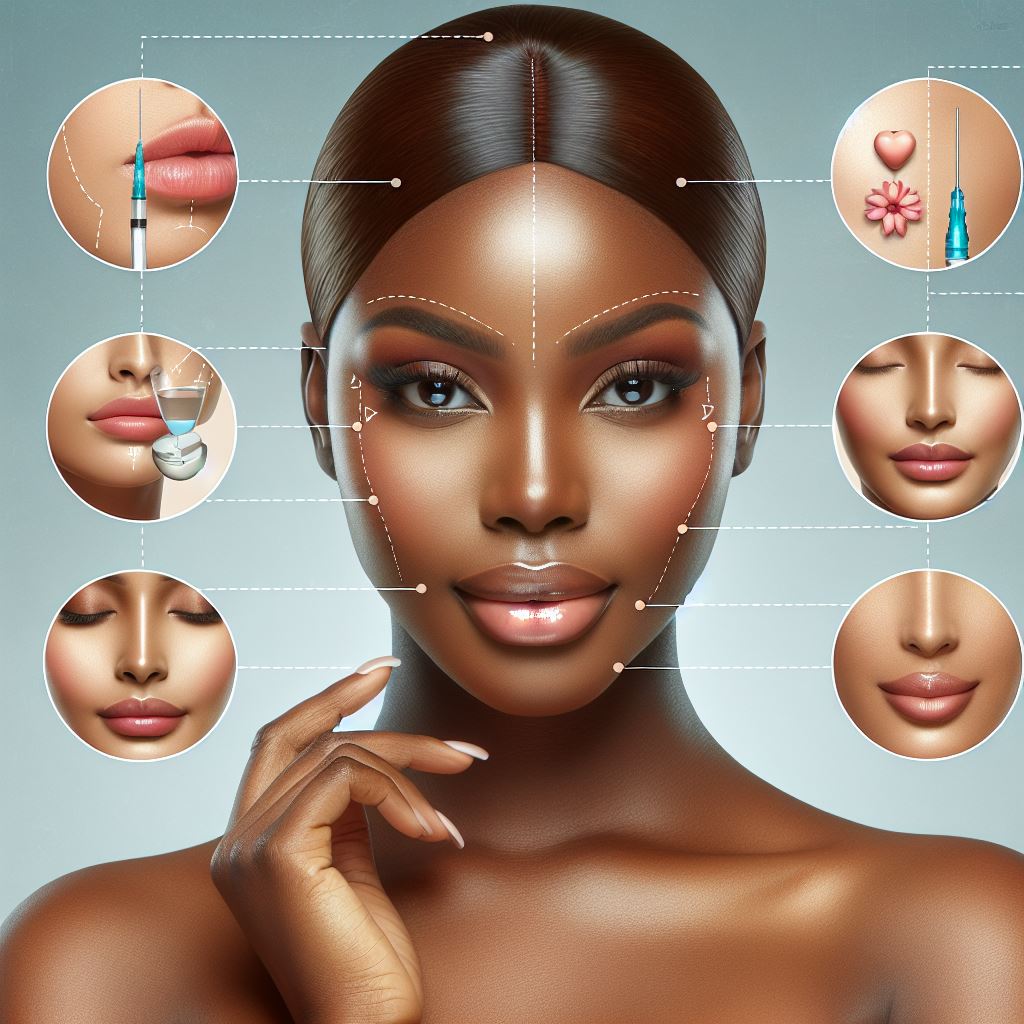
Embarking on the journey of getting Botox injections? Whether it’s for cosmetic enhancements or therapeutic reasons, proper preparation is key to ensuring a smooth and successful Botox experience. Let’s dive into the steps you can take to prepare for your Botox injection treatment.
1. Choose a Qualified Provider
The first step in your preparation journey is selecting a skilled and licensed healthcare provider experienced in administering Botox injections. Research potential providers, read reviews, and, if needed, seek recommendations. Your safety and the effectiveness of the treatment greatly depend on the expertise of the person wielding the syringe.
2. Schedule a Consultation
Before the needles come out, schedule a consultation with your chosen healthcare provider. This is the time to discuss your goals, medical history, and any concerns you may have. Be open about your expectations, and ask questions about the procedure, potential side effects, and the anticipated results. A thorough consultation sets the stage for a personalized and effective treatment plan.
3. Review Medications and Supplements
Certain medications and supplements can affect bleeding and bruising, so it’s crucial to inform your healthcare provider about any you’re taking. They may recommend adjusting or temporarily discontinuing certain blood-thinning medications to minimize the risk of bleeding or bruising at the injection site.
4. Avoid Alcohol and Anti-Inflammatory Drugs
In the days leading up to your Botox treatment, steer clear of alcohol and nonsteroidal anti-inflammatory drugs (NSAIDs) like aspirin and ibuprofen. These substances can increase the risk of bruising. Opt for alternative pain relievers like acetaminophen if needed, but always consult with your healthcare provider first.
5. Stay Hydrated
Proper hydration is beneficial for your overall well-being and can contribute to the success of your Botox treatment. Drinking an adequate amount of water in the days leading up to your appointment can help keep your skin healthy and hydrated, potentially enhancing the results of the injection.
6. Plan Your Schedule
While Botox injections are a quick procedure, it’s wise to plan your schedule accordingly. You may experience some redness or swelling at the injection site immediately after the treatment, so scheduling the appointment at a time when you can avoid immediate social or work-related obligations can be helpful.
7. Consider Arnica Montana
Arnica Montana, a natural supplement available in various forms, is believed by some to help reduce bruising and swelling. While scientific evidence is limited, some individuals choose to incorporate Arnica into their pre and post-Botox routine. Consult with your healthcare provider before adding any supplements to your regimen.
8. Arrive with a Clean Face
On the day of your Botox treatment, arrive with a clean face, free from makeup or skincare products. This ensures a clean canvas for the injections and reduces the risk of infection. Your healthcare provider will likely cleanse the treatment area before starting the procedure.
9. Communicate Any Changes
If there are any changes in your health or medications between the consultation and the actual treatment, inform your healthcare provider. Open communication is essential for your safety and the success of the Botox injection.
What Happens During the Botox Procedure

So, you’ve made the decision, had your consultation, and the day for your Botox injection treatment has arrived. What can you expect during this quick and transformative procedure? Let’s walk through the steps and demystify the Botox experience.
1. Arrival and Greeting
As you step into the clinic or office, you’ll likely be greeted by the friendly staff. The ambiance is usually relaxed, designed to put you at ease. Your healthcare provider may reconfirm your goals and address any last-minute questions or concerns you might have.
2. Preparation and Cleansing
Before the magic happens, your healthcare provider will prepare the treatment area. This involves cleansing the skin to ensure it’s free from any makeup, oils, or debris. This step is crucial for preventing infection and optimizing the effectiveness of the Botox injections.
3. Mapping the Injection Sites
Your healthcare provider will strategically map out the injection sites based on your discussed goals and the areas you want to address. This mapping process ensures precision in targeting specific muscles to achieve the desired results. The number of injections varies depending on the treatment area and your individual needs.
4. The Tiny Needle Moment
Time for the star of the show – the Botox injection itself. The procedure involves using an ultra-fine needle to deliver small amounts of Botox into the predetermined muscles. The needle is so fine that the discomfort is generally minimal, often described as a slight pinch or sting. Many individuals tolerate the injections well without the need for anesthesia.
5. Quick and Painless
Botox injections are known for their speed and efficiency. The entire procedure typically takes only a few minutes. You’ll be in and out of the office swiftly, making it a convenient option for those with busy schedules.
6. Post-Injection Care
After the injections, your healthcare provider may apply gentle pressure to the treated areas to minimize any potential bruising. Some providers also recommend avoiding rubbing or massaging the treated areas immediately after the procedure to prevent the Botox from spreading to unintended areas.
7. Return to Normal Activities
One of the perks of Botox injections is the minimal downtime. After the procedure, you’re usually free to return to your regular activities. However, it’s generally advised to avoid lying down for a few hours and to refrain from intense physical activity on the day of the treatment.
8. Patience for Results
While Botox works its magic quickly, the full results may take a few days to become evident. Don’t be disheartened if you don’t see an immediate transformation – gradual improvement is part of the Botox journey. The longevity of results varies from person to person but typically lasts around 3 to 4 months.
9. Follow-Up and Future Plans
Your healthcare provider may schedule a follow-up appointment to assess the results and make any necessary adjustments. This is an excellent time to discuss any concerns or additional areas you might want to address in future treatments.
What to Expect After Botox Injection Treatment
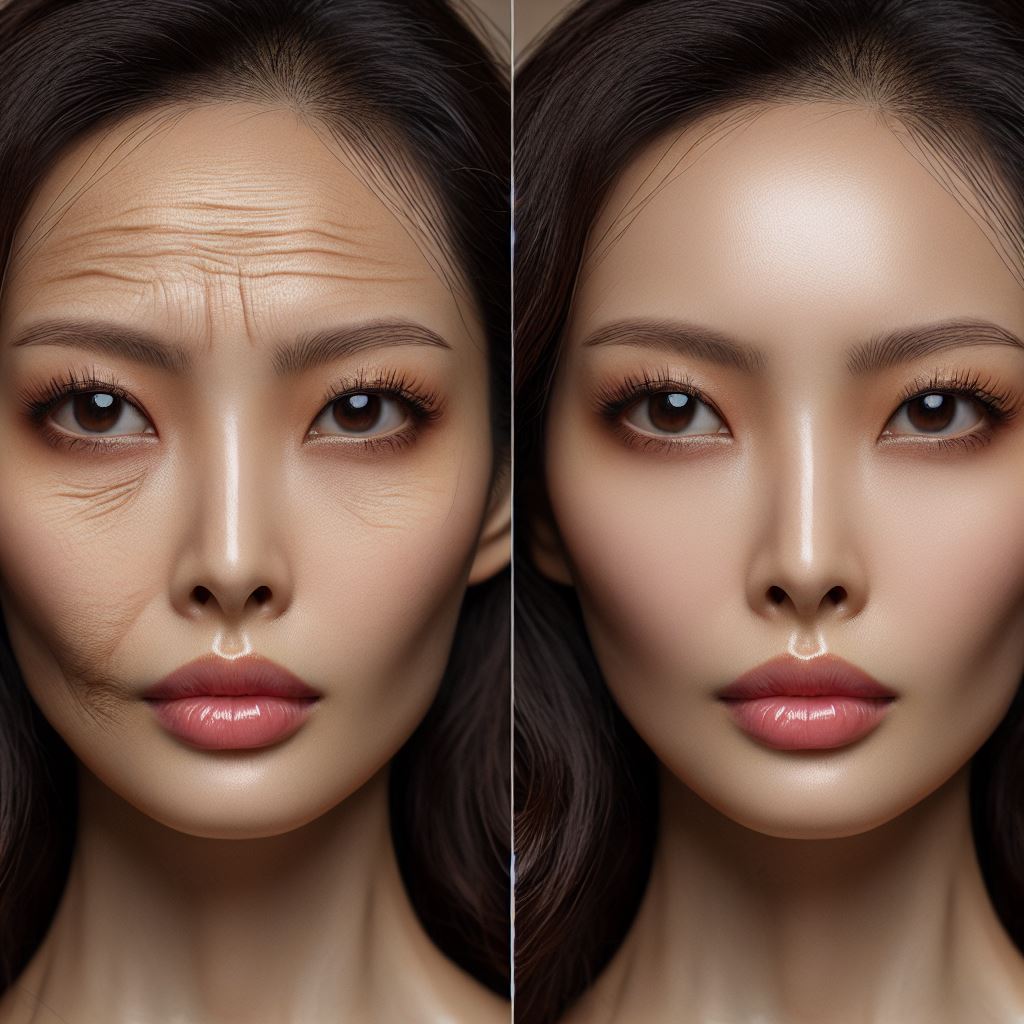
You’ve successfully navigated the Botox injection procedure. Now, let’s delve into the post-treatment phase and what you can anticipate in the days and weeks following those tiny but mighty injections.
1. Immediate Post-Procedure Period
Right after your Botox injections, you might experience some minor redness, swelling, or bruising at the injection sites. This is entirely normal and typically resolves within a few hours to a day. Your healthcare provider may apply a cold compress to help soothe any discomfort.
2. No Rubbing or Lying Down
To ensure the Botox stays precisely where it’s meant to be, it’s advisable to avoid rubbing or massaging the treated areas for the first 24 hours. Additionally, try to remain upright and avoid lying down for 2 to 4 hours after the procedure.
3. Resume Normal Activities
Unlike more invasive cosmetic procedures, Botox injections allow for a quick return to normal activities. You can resume your daily routine, with some providers even suggesting light exercise on the same day. However, always follow your healthcare provider’s specific post-procedure instructions.
4. Patience for Results
While Botox is known for its efficiency, the full results won’t be immediately visible. It takes a bit of time for the neurotoxin to work its magic on the targeted muscles. Typically, you’ll start noticing the effects within 1 to 3 days, with the full results manifesting over the following week.
5. Duration of Results
The longevity of Botox results varies from person to person but commonly lasts around 3 to 4 months. Some individuals may experience effects for a longer duration, especially with subsequent treatments. Regular follow-up appointments help maintain the desired results.
6. Potential Side Effects
While side effects are generally minimal, you might experience a mild headache or flu-like symptoms in the immediate aftermath. These symptoms are usually short-lived. However, if you notice anything concerning, it’s crucial to contact your healthcare provider promptly.
7. Follow-Up Appointment
Your healthcare provider may schedule a follow-up appointment to assess the results and address any concerns you might have. This is an excellent opportunity to discuss your experience, share your satisfaction, or express any desire for adjustments in future treatments.
8. Adjustment Period for Movement
As Botox gradually takes effect, you may notice changes in muscle movement. The targeted muscles become temporarily relaxed, leading to a reduction in wrinkles. It’s a subtle transformation that enhances your natural appearance without sacrificing your ability to express emotions.
9. Future Plans and Maintenance
If you’re delighted with the results, you might be considering future Botox treatments. Your healthcare provider can help establish a schedule for maintenance injections, ensuring that you continue to enjoy the benefits of a refreshed and rejuvenated look.
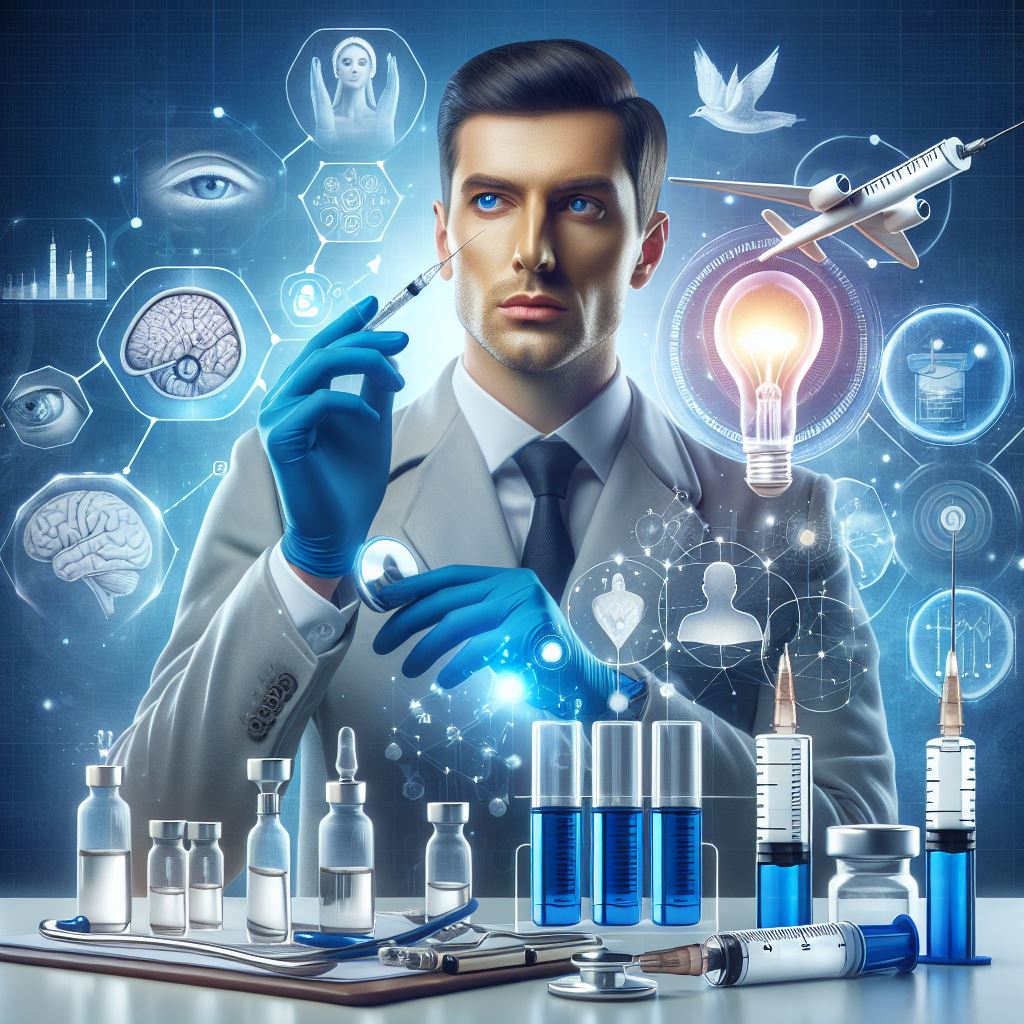
The days following your Botox injection treatment are a part of the journey toward a more youthful and revitalized you. Embrace the subtle changes, be patient for the full results, and maintain open communication with your healthcare provider. With proper aftercare and periodic follow-ups, the post-Botox period can be as smooth and satisfying as the procedure itself. Here’s to a radiant and confident you!
Contraindications
Certain individuals, such as pregnant or breastfeeding women and those with specific neurological conditions, should avoid Botox treatments. A thorough consultation with a healthcare provider is essential to ensure suitability.
Frequently Asked Questions
What exactly does Botox do?
Botox shots work by blocking specific chemical signals from nerves, preventing muscles from contracting. The primary purpose of these injections is to relax facial muscles, reducing frown lines and other wrinkles. Additionally, Botox injections are employed to alleviate symptoms associated with certain health conditions, although it’s important to note that Botox is not a cure for these conditions.
Is Botox good for your face?
Dynamic wrinkles, like crow’s feet around your eyes and lines on your forehead, are effectively addressed by Botox. Botox employs different forms of botulinum toxin to temporarily paralyze or relax muscle activity, making it a suitable choice for treating dynamic wrinkles. By smoothing out these wrinkles, Botox helps restore a more youthful and refreshed appearance.
What are the risks of Botox?
While most individuals tolerate this medication well, it’s essential to be aware of potential side effects. The most common side effects include pain and bruising at the injection site, as well as droopy eyelids and eyebrows. Headaches are also frequently reported. However, it’s crucial to note that more serious side effects, such as difficulty breathing and swallowing, can occur and require immediate attention.
How long does Botox last?
Typically, the effects of Botox persist for about 3-4 months. However, individual experiences may vary, with some patients enjoying longer-lasting results extending to 4-6 months or, conversely, shorter-lasting effects around 2 months. It’s not uncommon for first-time recipients to observe that the initial duration may be shorter but tends to extend with subsequent treatments. Individual responses to Botox can vary, and factors such as treatment history and individual physiology play a role in the duration of its effectiveness.
Are there age restrictions for Botox injections?
While there may not be strict age restrictions, the suitability of Botox injections depends on individual health conditions. Consult with your health care provider to determine if it is appropriate for your age and health status.
How much does Botox injections cost?
The NHS website says that Botox prices range between £100 – £350 in the UK. However, figures can vary. Firstly, it depends on how many areas are being treated. While the prices may appear to start quite low, this may be for a very small dose.
Can Botox be used for cosmetic purposes only?
While Botox is commonly used for cosmetic purposes to reduce wrinkles, it also has medical applications. Consult with your health care provider to determine the most appropriate use for your specific needs.
Can I exercise after getting Botox injections?
Avoid vigorous exercise immediately after getting Botox injections. Consult your health care provider for guidance on when it is safe to resume your regular exercise routine.
When do Botox injections start showing results?
Botox injections usually begin working 1 to 3 days after treatment, though it can take a week or more to see full results. Not all people have visible results or relief from symptoms.
How long do the effects of Botox last?
Depending on the problem being treated, the effect may last 3 to 4 months. To maintain the effect, you’ll likely need regular follow-up injections spaced at least three months apart.
Is Botox Painful?
There’s a common misconception about the pain associated with Botox® due to the involvement of needles. However, the needle used during a Botox® procedure is incredibly small, leading to most individuals describing only a mild pinch or stinging sensation. Botox® needles usually have a 30-gauge size, identical to those used for insulin injections.
Should I tell my health care provider if you’ve had any type of Botox injection within the past four months?
Inform your health care provider if you’ve had any type of Botox injection within the past four months. Additionally, disclose if you take blood thinners, as you may need to stop taking them several days before your injection to reduce the risk of bleeding or bruising.
What can I expect before the Botox procedure?
Most people don’t feel much pain during the procedure. However, your skin may be numbed beforehand, especially if your palms or feet are being treated for heavy sweating. Your health care provider might use methods like anesthetic applied to the skin, ice, or
massage (vibration anesthesia) to numb the area.
How are Botox injections performed?
Botox injections are usually performed in a medical office. Your health care provider uses a thin needle to inject tiny amounts of botulinum toxin into your skin or muscles. The number of shots needed depends on the size of the treatment area and other factors.
Sometimes ultrasound is used to guide the needle to the right spot.
After the Botox procedure, what precautions should I take?
Do not rub or massage the treated areas for 24 hours, and avoid lying down for 2 to 4 hours after getting the shots. Following this advice helps prevent the toxin from spreading to an area where it isn’t needed. You’ll likely be able to return to your usual activities right after the procedure — check with your health care provider for guidance.
Can Botox spread to other parts of the body?
Rarely, the medicine may spread to unintended areas, causing symptoms. Seek immediate medical attention if you experience such symptoms.
Is Botox recommended during pregnancy or breastfeeding?
Health care providers generally advise against Botox use during pregnancy or breastfeeding.
How do I find a skilled Botox provider?
Botox is a prescription medicine and must be used only under the care of a licensed and skilled health care provider. Ask your primary care provider for a referral.
How should I prepare for Botox injections?
Which type of botulinum injection is right for you depends on your needs and condition. Talk with your health care provider about the treatment best suited to you.
What is the toxin used in Botox, and is it safe?
Botox uses a purified form of botulinum toxin, meeting medical standards approved by the U.S. FDA. When administered correctly, these toxins are not harmful.
Can Botox help prevent migraines?
Yes, Botox injections may help reduce the frequency of migraines, particularly for those experiencing chronic migraines.
Are there risks associated with Botox injections?
While generally safe, there are potential side effects, including pain, swelling, droopy eyelids, and, rarely, more severe symptoms like muscle weakness or breathing problems.
What medical conditions can be treated with Botox injections?
Botox is used for neck spasms, muscle spasms, lazy eye, excessive sweating, migraines, and urinary incontinence caused by an overactive bladder.
Is Botox a cure for these medical conditions?
No, Botox is not a cure but helps alleviate symptoms associated with certain health conditions.
How do Botox injections work on facial wrinkles?
Botox blocks chemical signals from nerves that cause facial muscles to contract, relaxing the muscles responsible for frown lines and wrinkles.
Is Botox used to treat chronic pain conditions?
Botox injections are sometimes used to alleviate chronic pain conditions, such as certain types of headaches and muscular pain. Consult with your health care provider to explore potential pain management options.
Can Botox treat wrinkles in areas other than the face?
While facial wrinkles are a common target, Botox can also be used to address wrinkles in other areas of the body, such as the neck and hands. Discuss specific treatment areas with your health care provider.
Can I consume alcohol before or after Botox injections?
Avoid consuming alcohol before Botox injections, and it’s recommended to limit alcohol intake afterward. Alcohol can increase the risk of bruising at the injection site and may affect recovery.
Are there natural alternatives to Botox for wrinkle reduction?
Yes, there are natural alternatives such as topical creams, facial exercises, and good skincare practices. Discuss your preferences and concerns with your health care provider to explore suitable options.
How can you tell if someone has Botox?
Detecting whether someone has undergone Botox treatment can be challenging, as it often yields subtle and natural-looking results. However, some potential indicators may include:
Immobility of Forehead Wrinkles: If the person’s forehead remains unusually smooth and lacks typical expression lines, they might have had Botox to relax those muscles.
Lack of Crow’s Feet: Botox is commonly used to soften or eliminate crow’s feet around the eyes. If these lines are notably reduced or absent, it could be a sign of Botox treatment.
Unchanged Expression during Emotion: Botox can impact facial muscles, making it difficult for individuals to display certain emotions through facial expressions. Limited movement in specific areas may be noticeable.
Consistently Elevated Eyebrows: Botox can lift the eyebrows and create a more lifted appearance. If someone’s eyebrows seem consistently raised, it could be an indication of Botox use.
Glabellar Lines (Frown Lines) Smoothing: Botox is frequently used to address frown lines between the eyebrows. If these lines are visibly smoother, Botox may be a contributing factor.
It’s important to note that these signs are not definitive proof, and some individuals naturally exhibit these characteristics. Additionally, a skilled practitioner can achieve subtle and natural results with Botox, making it challenging to discern without direct confirmation from the person.
What happens when you stop using Botox?
After the effects of Botox diminish, your skin will gradually return to its baseline or natural appearance. Although it may appear as if your wrinkles have intensified, it’s essential to realize that you might have simply forgotten how your face naturally looked with its original wrinkles.
Who should not use Botox?
Individuals who are pregnant, breastfeeding, or dealing with a neurological disease should refrain from using Botox. It is crucial to consult with a doctor before considering Botox, as it may not be effective for all types of wrinkles. Moreover, if you have an allergy to cow’s milk protein, it is advisable to avoid Botox injections.
Where do you inject Botox?
- Forehead:
- Purpose: To reduce the appearance of horizontal forehead lines and wrinkles.
- Procedure: Injections are administered across the forehead to target the muscles responsible for forehead movements.
- Glabella (Between the Eyebrows):
- Purpose: Addresses vertical frown lines between the eyebrows.
- Procedure: Injections are strategically placed in the glabella region to relax the muscles causing the “11 lines” or frown lines.
- Crow’s Feet (Around the Eyes):
- Purpose: Targets the fine lines and wrinkles that radiate from the corners of the eyes.
- Procedure: Injections are applied at the outer corners of the eyes to relax the muscles responsible for crow’s feet.
- Brow Lift:
- Purpose: Elevates and shapes the eyebrows.
- Procedure: Injections may be strategically placed to lift the brows and create a more youthful and lifted appearance.
- Bunny Lines (Nose Wrinkles):
- Purpose: Addresses wrinkles on the sides of the nose.
- Procedure: Injections are administered to relax the muscles causing bunny lines when scrunching the nose.
- Jawline and Chin:
- Purpose: Defines and contours the jawline and reduces the appearance of dimpling on the chin.
- Procedure: Injections may be used to relax specific jaw muscles and create a more sculpted jawline.
- Neck Bands:
- Purpose: Targets vertical bands or lines on the neck.
- Procedure: Injections are strategically placed to relax the muscles causing prominent neck bands.
- Underarms:
- Purpose: Addresses excessive sweating (hyperhidrosis).
- Procedure: Injections are administered to the underarm area to inhibit sweat gland activity.
- Other Areas:
- Purpose: Depending on medical conditions, Botox may be used for various therapeutic purposes, including treating migraines, muscle spasms, and bladder issues.
- Procedure: Injections are customized based on the specific medical condition and targeted muscle groups.
Which ages are best for Botox?
People of any age can get treatment with Botox, and it is regularly used on people between the ages of 25 and 50 particularly. No matter how old or young you are, however, this treatment can relax the look of wrinkles and even stop them from forming in the first place.
What can i do instead of Botox?
Wondering about alternatives to Botox for forehead wrinkles? Numerous non-invasive topical treatments are available, such as facial creams, serums, vitamins, chemical peels, radio frequency, and facial exercises.
Can I reverse Botox?
Is it possible to undo Botox effects? In essence, no, there is no direct reversal for Botox. Once it takes effect, the only option is to wait for it to naturally wear off, or, if applicable, enhance the results. The positive aspect is that Botox is not a permanent solution, and its effects typically fade gradually over a span of 3-4 months.

